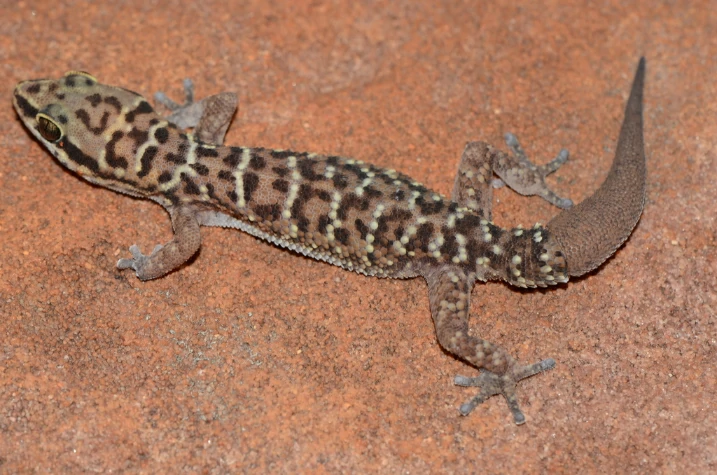If you’ve ever seen a leopard gecko or an African fat-tailed gecko, you probably noticed something unusual, their tails aren’t thin or pointy like most lizards.
They’re thick, rounded, and sometimes almost as wide as the gecko’s body. It’s not just for looks. So what’s really behind that big, fat tail?
Geckos have big fat tails to store energy, survive tough conditions, and stay balanced. That extra bulk is mostly fat; a built-in energy supply that helps them make it through dry seasons, long nights, and times when food is hard to find. It also helps them stay steady when they move or jump.
Those plump tails might look cute, but they’re really survival tools in disguise.
The Tail Helps Geckos Store Fat
For many geckos, especially ones from dry areas, food isn’t always easy to find. In the wild, a good hunting day might be followed by several days with almost nothing to eat.
So, geckos evolved a clever backup plan. They store extra fat in their tails when food is plenty.
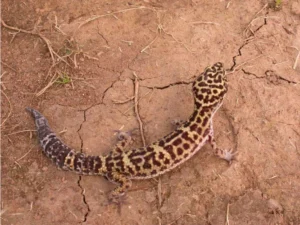
Later, when insects are scarce or temperatures drop, they slowly use that fat for energy.
Think of it like a savings account. When times are good, they store up; when times get tough, they make withdrawals.
For example, leopard geckos living in the rocky deserts of South Asia often go weeks with little to eat.
Their tails keep them alive during these lean times, letting them keep moving, growing, and even reproducing when other animals might starve.
How the Fat Actually Helps the Gecko Survive
Inside the tail, the stored fat gives geckos three main benefits:
-
Energy supply: It fuels them when food isn’t available, like during droughts or cooler months.
-
Water source: Breaking down fat releases a little water, which is very handy in dry habitats.
-
Body maintenance: It helps with muscle recovery, healing, and general health.
Basically, the tail is a portable pantry and water supply all in one. Geckos don’t have to eat every day because their tails help them get through the gaps.
Still, tail fat isn’t just about surviving hunger. It’s also a clue to how healthy a gecko really is.
What a Fat Tail Says About a Gecko’s Health
If you see a gecko with a thick, rounded tail, that’s a good sign. It means it’s well-fed and healthy. But if the tail looks thin or bony, that’s a red flag.
A skinny tail often means the gecko hasn’t eaten enough or has used up its stored energy, maybe from illness, stress, or breeding.
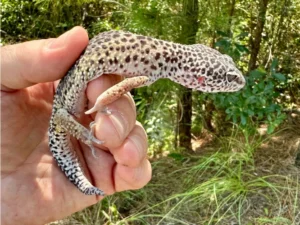
In captivity, it can also mean the gecko isn’t being fed properly.
Many reptile keepers use the tail as a quick health check.
The rule is simple:
-
Fat tail = healthy gecko
-
Thin tail = needs help
Basically, the tail tells the story of how the gecko is doing, long before any other signs show up.
Do All Geckos Have Big Fat Tails?
No, only some species do. Fat tails are most common in geckos that live in dry, unpredictable environments where food and water come and go.
Here are a few examples:
-
Leopard gecko (Eublepharis macularius): lives in semi-deserts of India, Pakistan, and Afghanistan.
-
African fat-tailed gecko (Hemitheconyx caudicinctus): native to West Africa’s savannas.
-
Turner’s thick-toed gecko (Chondrodactylus turneri): found in arid parts of southern Africa.
In contrast, tree-dwelling or tropical geckos (like the crested gecko or tokay gecko) have thinner, more flexible tails. Their environments are full of food and moisture, so they don’t need to store fat.
Why the Tail Isn’t Just Fat, It’s Functional Too
Even with all that stored energy, the tail still does other things. It’s not just sitting there like a lump of fat.
Fat-tailed geckos use their tails for:
-
Balance: The tail acts like a counterweight, helping them stay steady as they climb or make quick turns.
-
Communication: Tail flicking can signal alarm or curiosity.
-
Defense: If attacked, they can drop the tail entirely. This move startles predators and gives geckos time to escape.
So even a plump tail can be agile and purposeful. It’s soft on the outside but backed by muscle and nerves that keep it moving when needed.
What Happens When a Fat-Tailed Gecko Loses Its Tail?
Here’s where things get tricky. When a fat-tailed gecko drops its tail from stress, fright, or being grabbed, it loses more than just a body part.
That tail held most of its stored fat. Without it, the gecko suddenly loses its emergency supply of food and water.
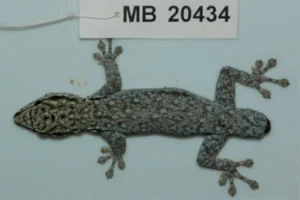
It becomes weaker, more cautious, and more vulnerable to hunger and dehydration.
The good news is that geckos can regrow their tails. The bad news is the new tail won’t be the same.
Regrown tails are shorter, rounder, and mostly made of cartilage instead of bone.
They also store less fat, which means the gecko has less to fall back on until it rebuilds its reserves.
How Long It Takes for the Tail to Grow Back
The healing and regrowth process depends on species, age, and health. Usually, it takes a few weeks for the wound to close and several months for the new tail to fully grow.
During this time, the gecko puts a lot of energy into rebuilding tissue, so it may eat more and move less.
You can often tell the difference between the original tail and the new one, the regrown tail is smoother, duller in color, and sometimes a slightly different shape.
Still, it does the job.
Why Fat-Tailed Geckos Don’t Regrow Tails Easily
Some species, like the African fat-tailed gecko, can regrow tails, but not always efficiently.
Because they rely so much on tail fat for survival, dropping the tail is a last resort. In the wild, they avoid it unless they’re in serious danger.
Once lost, it takes months to fully recover strength.
That’s why, in captivity, keepers are told to handle fat-tailed geckos with extra care.
Stressing them out too often can cause unnecessary tail loss and weaken their overall health.
How Fat Tails Help in Breeding and Reproduction
There’s another reason geckos store fat: reproduction.
Female geckos, especially species like leopard geckos, use tail fat as a nutrient reserve during egg production.
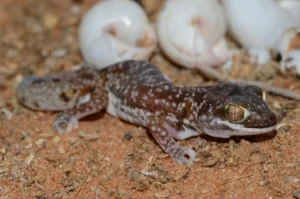
Building eggs takes a lot of energy and calcium, and when food is scarce, that stored fat fills the gap.
Males also benefit from tail fat during breeding season, when they may eat less and focus more on finding mates.
So the tail isn’t just about survival, it also helps the next generation.
Do Geckos Ever Get “Too Fat”?
Yes, especially in captivity. When pet geckos always have food and little space to move, their tails can get too thick.
An overly fat tail might look cute, but it can cause problems:
-
Trouble moving or balancing properly
-
Fat buildup around internal organs
-
Reduced breeding performance
In the wild, geckos rarely face this problem because they naturally go through cycles of plenty and scarcity. In captivity, the key is balance.
Feed enough to keep the tail plump, not swollen.
Can the Tail Help Control Body Temperature?
Interestingly, the fat inside the tail also helps with temperature control.
Fat holds heat differently than muscle, so it allows geckos to stabilize their body temperature when the environment changes.
At night, the tail’s fat can help hold warmth; during the day, it can release it slowly.
This small effect is helpful, especially for desert geckos that face big temperature swings between day and night.
Basically, the tail helps smooth out nature’s ups and downs, in both food and climate.
Fat Tails Also Act as Camouflage and Distraction
In some species, the tail even works as a decoy.
Fat-tailed geckos sometimes lift or wave their tails to distract predators from their heads.
The tail’s size and movement draw attention, giving the gecko a better chance to escape.
In darker species like the African fat-tailed gecko, the tail’s patterns can even blend with the background, making it less noticeable to predators.
So the tail isn’t just a food reserve, it’s part of the gecko’s disguise and defense plan.
Do Young Geckos Have Fat Tails Too?
Baby geckos hatch with thin, flexible tails. They start building fat reserves only after they grow and eat regularly.
A young gecko’s first few months are all about eating and storing. You can often watch the tail slowly thicken as it matures, a sign it’s thriving.
If a young gecko’s tail stays thin for too long, it might mean it’s not getting enough nutrients.
Conclusion
Those big, fat gecko tails aren’t just cute, they’re the result of millions of years of survival strategy.
They act as energy banks, water sources, and defense systems all at once. They store life itself, keeping geckos safe during hunger, cold, and danger.
A fat tail tells you everything about a gecko, how well it’s eating, how it’s surviving, and how nature has shaped it to thrive in harsh environments.
Hi, my name is Ezra Mushala, i have been interested animals all my life. I am the main author and editor here at snakeinformer.com.

